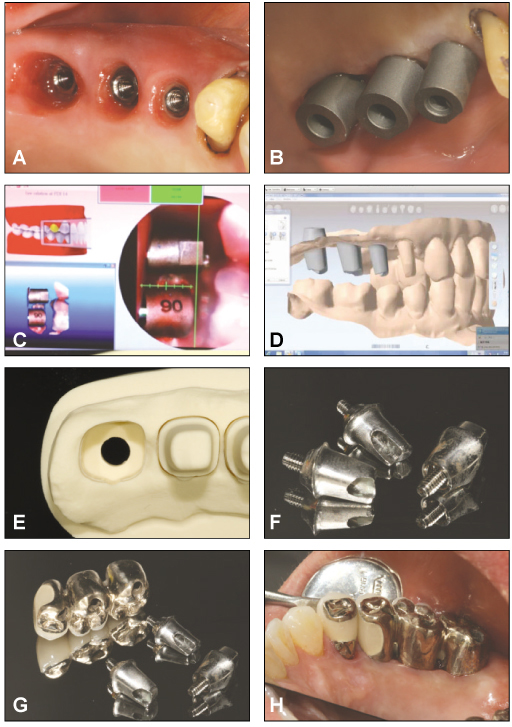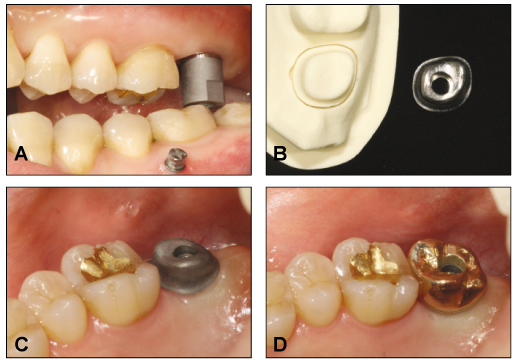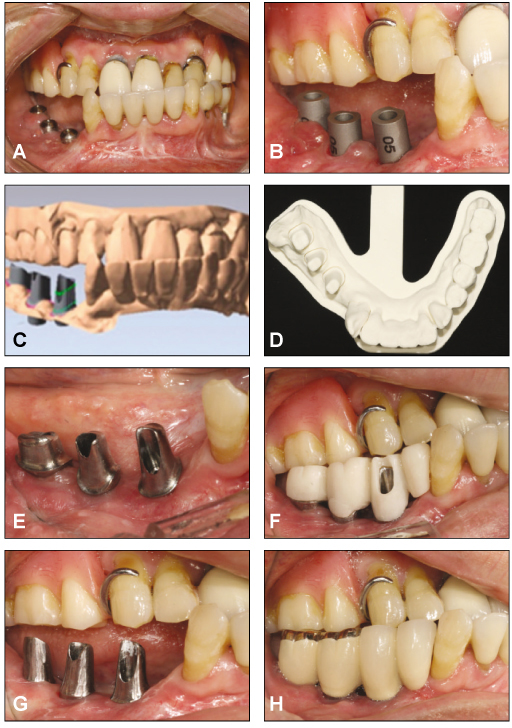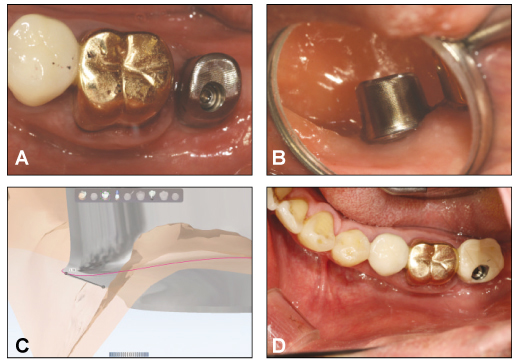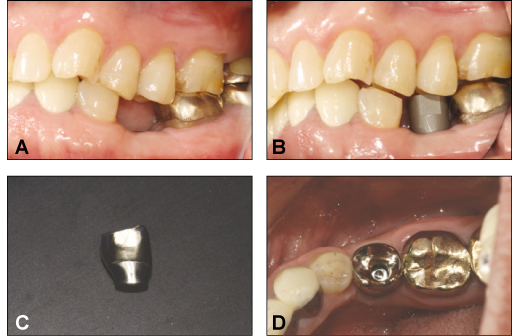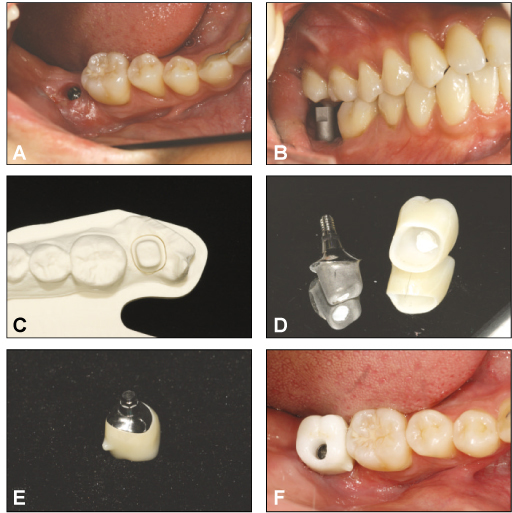J Korean Acad Prosthodont.
2012 Jan;50(1):67-73.
Customized abutment and screw-type implant prostheses after cementation based on the digital intra-oral impression technique
- Affiliations
-
- 1Department of Prosthodontics, School of Medicine, Ewha Womans University, Seoul, Korea. jimarn@ewha.ac.kr
- 2Department of Prosthodontics, School of Dentistry, Seoul National University, Seoul, Korea.
Abstract
- Fixed dental prostheses such as inlay, onlay, crown, and bridge fabricated by CAD/CAM technique combined with digital impressions is getting popular due to the recent rapid progress of digital impression taking system. For the scope of implant prosthesis, however, digital intra-oral scan hasn't been actively utilized for the fabrication of superstructures. In this case report, 6 cases of titanium-milled custom abutment based on the iTero intra-oral scan data were introduced, five of them were restored with screw-type prosthesis after cementation (SCRP) and the clinical results were satisfactory on restoring the function and esthetics.
MeSH Terms
Figure
Reference
-
1. Mörmann WH, Brandestini M. Die Cerec. Computer reconstruction: Inlays, Onlays and Veneers. 1989. Berlin: Quintessence;75–97.2. Leinfelder KF, Isenberg BP, Essig ME. A new method for generating ceramic restorations: a CAD-CAM system. J Am Dent Assoc. 1989. 118:703–707.
Article3. Syrek A, Reich G, Ranftl D, Klein C, Cerny B, Brodesser J. Clinical evaluation of all-ceramic crowns fabricated from intraoral digital impressions based on the principle of active wavefront sampling. J Dent. 2010. 38:553–559.
Article4. Mörmann WH, Bindl A. The Cerec 3--a quantum leap for computer-aided restorations: initial clinical results. Quintessence Int. 2000. 31:699–712.5. Herrguth M, Wichmann M, Reich S. The aesthetics of all-ceramic veneered and monolithic CAD/CAM crowns. J Oral Rehabil. 2005. 32:747–752.
Article6. Heymann HO, Bayne SC, Sturdevant JR, Wilder AD Jr, Roberson TM. The clinical performance of CAD-CAM-generated ceramic inlays: a four-year study. J Am Dent Assoc. 1996. 127:1171–1181.
Article7. Mörmann WH. The evolution of the CEREC system. J Am Dent Assoc. 2006. 137:7S–13S.8. Garg AK. Cadent iTero's digital system for dental impressions: the end of trays and putty? Dent Implantol Update. 2008. 19:1–4.9. Christensen GJ. The challenge to conventional impressions. J Am Dent Assoc. 2008. 139:347–349.
Article10. Hinds KF. Custom impression coping for an exact registration of the healed tissue in the esthetic implant restoration. Int J Periodontics Restorative Dent. 1997. 17:584–591.
- Full Text Links
- Actions
-
Cited
- CITED
-
- Close
- Share
- Similar articles
-
- Study of screw loosening in cementation type implant abutment
- Digital intraoral impression for immediate provisional restoration of maxillary single implant: A case report
- SINGLE TOOTH IMPLANT RESTORATION USING COMBINATION IMPLANT CROWN : A CASE REPORT
- Restoration of implant-supported fixed dental prosthesis using the automatic abutment superimposition function of the intraoral scanner in partially edentulous patients
- Clinical accuracy of impression technique using digital superimposition ofcustomized abutment with subgingival margin: A case report

